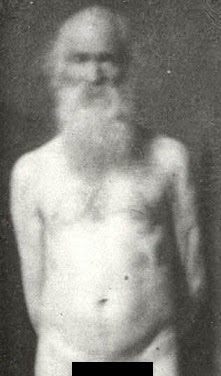And Walt Whitman (1819-1892), whose Leaves of Grass includes exceptionally open lines like "we boys together clinging, one the other never leaving"?
"Oh...um...he's talking about his brother."
In my junior year, my American Renaissance professor, Dr. Ames, brought Whitman a little farther out of the closet: "He loved women -- he scattered illegitimate children up and down the Eastern Seaboard -- but he also had a bit of the fruit in him."
Thirty years later, Walt Whitman the "good gay poet," and his magnum opus, Leaves of Grass, are still usually closeted by English professors. I often give my students this list of famous writers, and ask them to guess which ones were gay or bisexual:
1. Herman Melville (Moby Dick)
2. Charles Dickens (Tale of Two Cities)
3. Walt Whitman (Leaves of Grass)
4. William Shakespeare (Romeo and Juliet)
5. Emily Dickinson (Final Harvest)
6. Lewis Carroll (Alice in Wonderland)
7. Oscar Wilde (The Importance of Being Earnest)
8. F. Scott Fitzgerald (The Great Gatsby)
9. Edgar Allen Poe (The Raven)
10. Kenneth Grahame (The Wind in the Willows)
They're always the most surprised to find out that Whitman was gay, and Dickens was not.
So let's make things clear: Walt Whitman, the greatest poet in American history, was definitely, undeniably gay.
There is no evidence that he had any erotic interest in women: the illegitimate children story was a screen, made up during the 1920s to "save" the poet's image.
Before there was a vocabulary for same-sex desire, Whitman was all about inventing one:
"the manly love of comrades" and "adhesive friendships."
Near the end of his life, when the word "homosexual" was coined, and same-sex desire defined as a symptom of a dangerous psychosis, he backtracked a bit, claiming that he meant only spiritual comrades, nothing physical.
But he had many "physical" comrades through his life, and his journals describes cruising in detail. He picked up men on streetcars, at the docks, in the park.
Jerry Taylor, slept with me last night, heavenly.
Traverce Hedgeman, young, slight, fair, feminine, conductor.
Howard Atkinson, tall, sandy, country-fied.
Thin, smooth, and slightly feminine were his favorite traits. In West Hollywood, we called them Cute Young Things.
 His long-term lover, Peter Doyle, went against type.
His long-term lover, Peter Doyle, went against type.He also spent time with early gay rights pioneer Edward Carpenter (1844-1929), and, perhaps, artist Thomas Eakins (1844-1916), who painted a famous portrait of him, and may have photographed him nude.
Labeled only "Old Man, Seven Photographs," they are today housed in the Getty Museum.
But not on exhibit; you have to ask for them.
Even today, Walt Whitman is closeted.
See also: Gay American Renaissance




Are you suggesting Whitman liked gay twinks? He was a great poet and his celebration of male beauty in his poems is very clear- he loved men
ReplyDeleteHe kept a journal of the guys he hooked up with, and they appear to be mostly younger. Peter Doyle was 20 years younger.
DeleteI think I would rely more on the journals than his poetry for whom he was most attracted. His poetry was deliberately esoteric while he was expository in his journals.
DeleteI still have people saying "There's no evidence that he was gay."
Delete